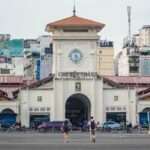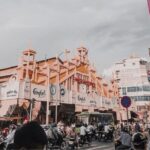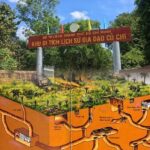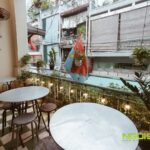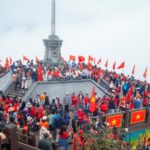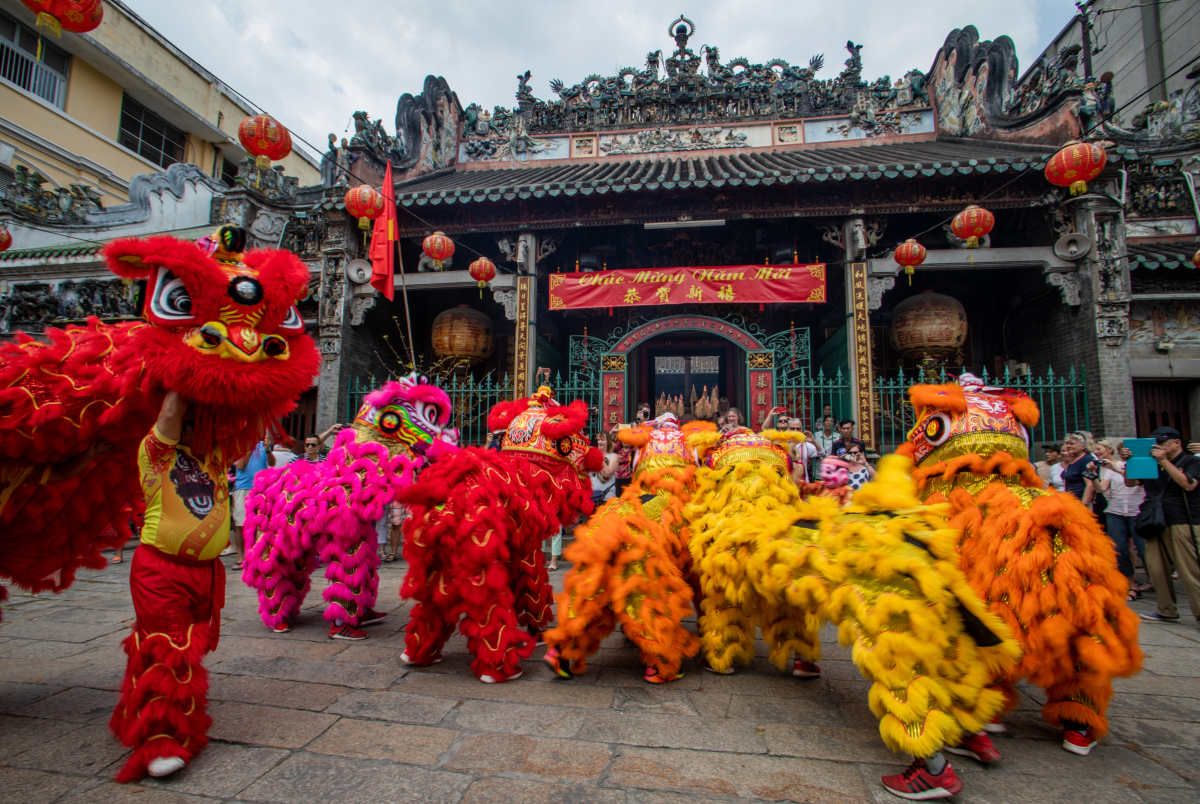
Chùa Bà Thiên Hậu, officially known as Tuệ Thành Hội Quán, is one of the oldest Chinese temples in Ho Chi Minh City. Located on Nguyen Trai Street in District 5, the temple was built around 1760 by Chinese merchants from Guangzhou, China. These traders would travel by ship to Vietnam for business and always carried a statue of the Holy Mother for blessings.
Every year, during the Lunar New Year celebrations, the temple attracts hundreds of lion and dragon dance troupes from Ho Chi Minh City and Binh Duong province, seeking blessings for a prosperous year ahead. This ritual is called “Khai Quang Diem Nhan.” Photo: Thanh Nguyen
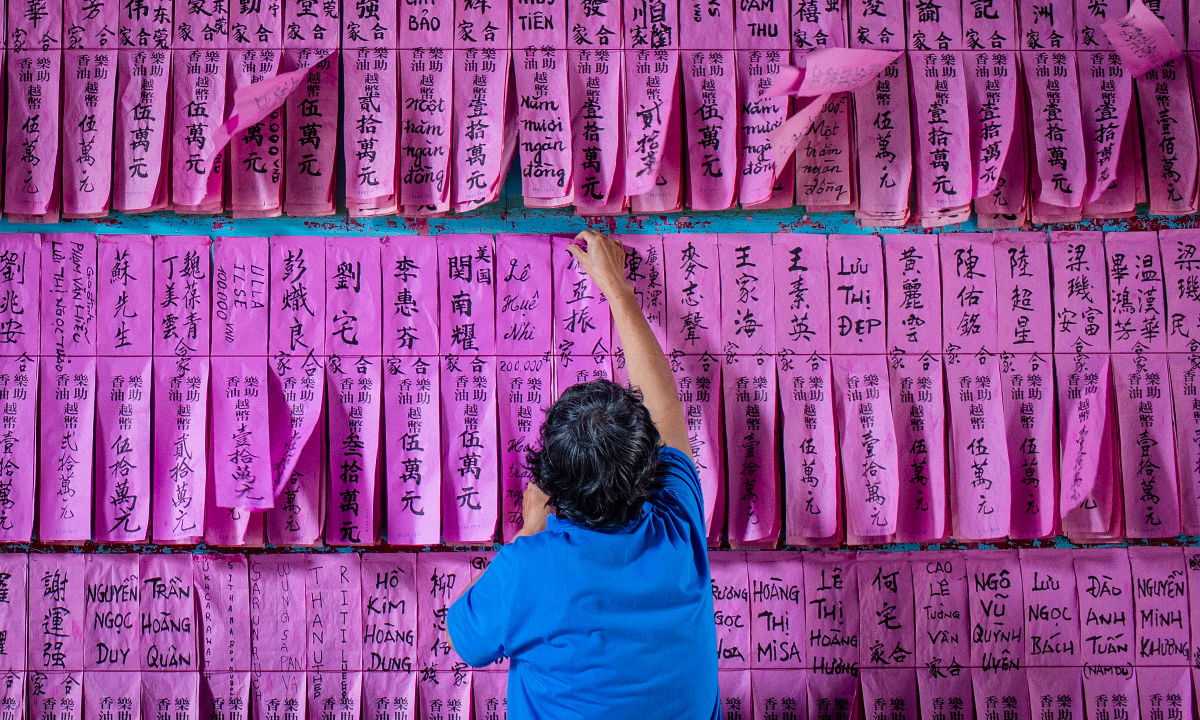
The temple’s corridors are adorned with papers bearing the names and donations of visitors. It is particularly bustling during festivals and full moon days, such as Tet Nguyen Dan (Lunar New Year), Nguyen Tieu (Lantern Festival), Doan Ngo (Double Fifth Festival), and the birthday of Lady Thien Hau (23rd day of the third lunar month). Photo: Thanh Nguyen
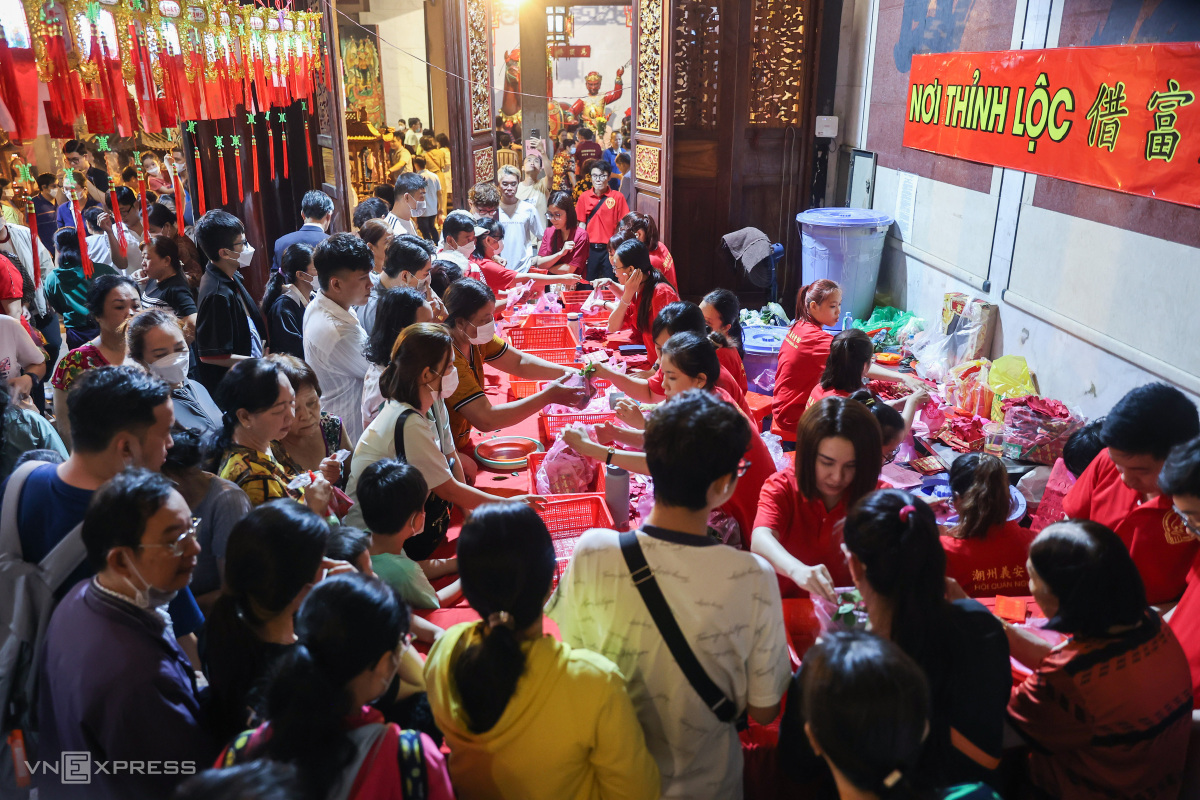
Hội Quán Nghĩa An, or the Quan帝 Temple, is a temple for people of Teochew and Hakka descent, built in the 19th century. The temple is dedicated to Quan Cong, a revered figure from the Three Kingdoms period known for his righteousness and heroic spirit.
The temple hosts two major festivals each year: Nguyen Tieu (Lantern Festival) and Quan Cong’s birthday, which attract numerous visitors.
Tet Nguyen Tieu, or Upper Yuan Festival, falls on the 15th day of the first lunar month and is an occasion for people to pray for peace, remove misfortunes, and wish for a prosperous year. A unique tradition during this festival is “vay loc” or “borrowing luck” from Quan Cong, believed to bring success in business. Photo: Quynh Tran
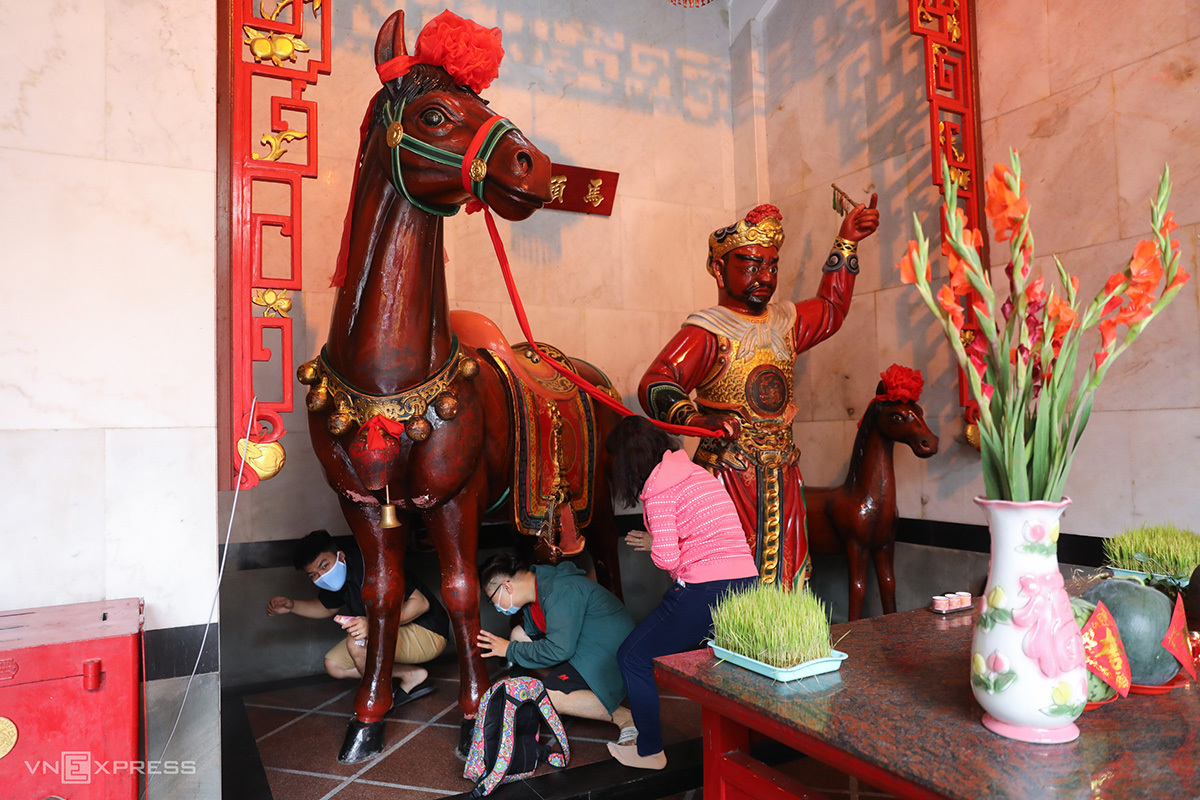
The temple also has a separate shrine for Xich Tho, Quan Cong’s famous red horse. After offering incense at the various shrines, devotees line up to ring the bell, touch, and crawl through the horse’s belly for good fortune in the new year. Photo: Quynh Tran
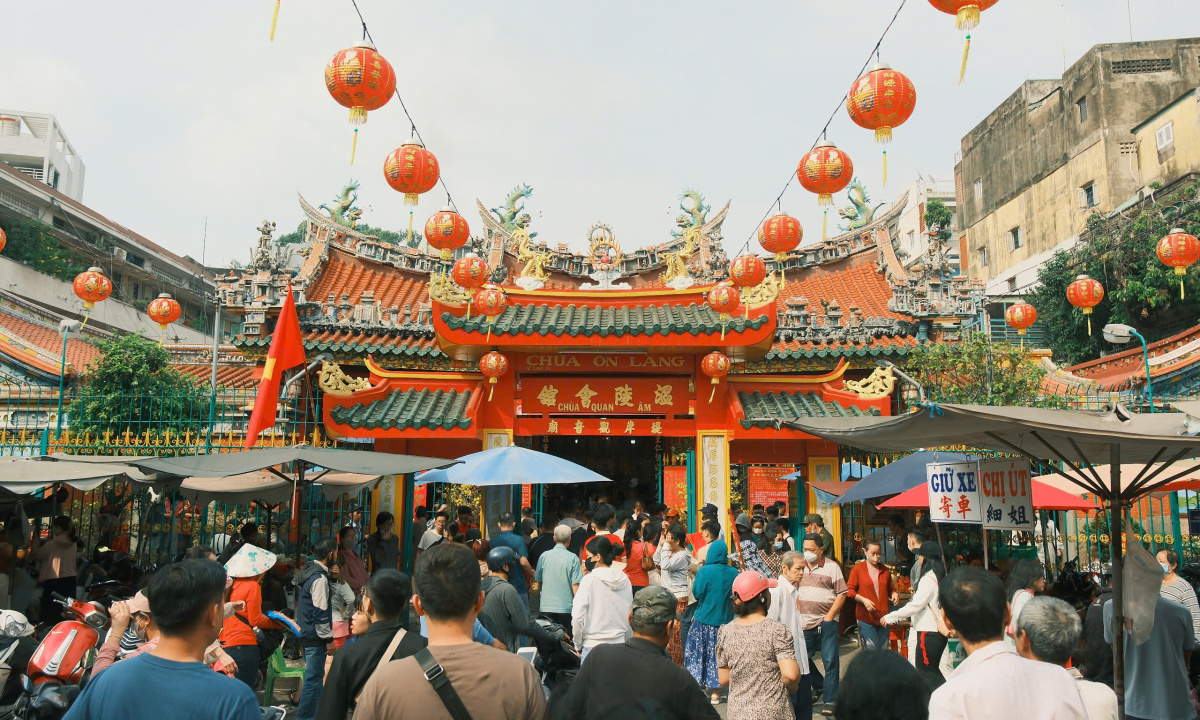
Chua Quan Am, or the On Lang Assembly Hall, is a sacred site for the Chinese community in Ho Chi Minh City. Located on Lao Tu Street in District 5, it was established in 1740 by a group of Fukien traders who migrated to Vietnam.
The temple primarily worships Thien Hau Thanh Mau, the goddess who protects seafarers and travelers. Over time, the local community also began worshipping Quan Am Bodhisattva, seeking blessings for prosperous businesses, good health, and peace. Today, the site is recognized as a national architectural and artistic relic, attracting many visitors for worship and sightseeing.
On Lang Assembly Hall is famous for the custom of “beating the petty person” to pray for good luck, which takes place in front of the Tiger God’s altar, usually on the 5th or 6th of March. Photo: Bich Phuong
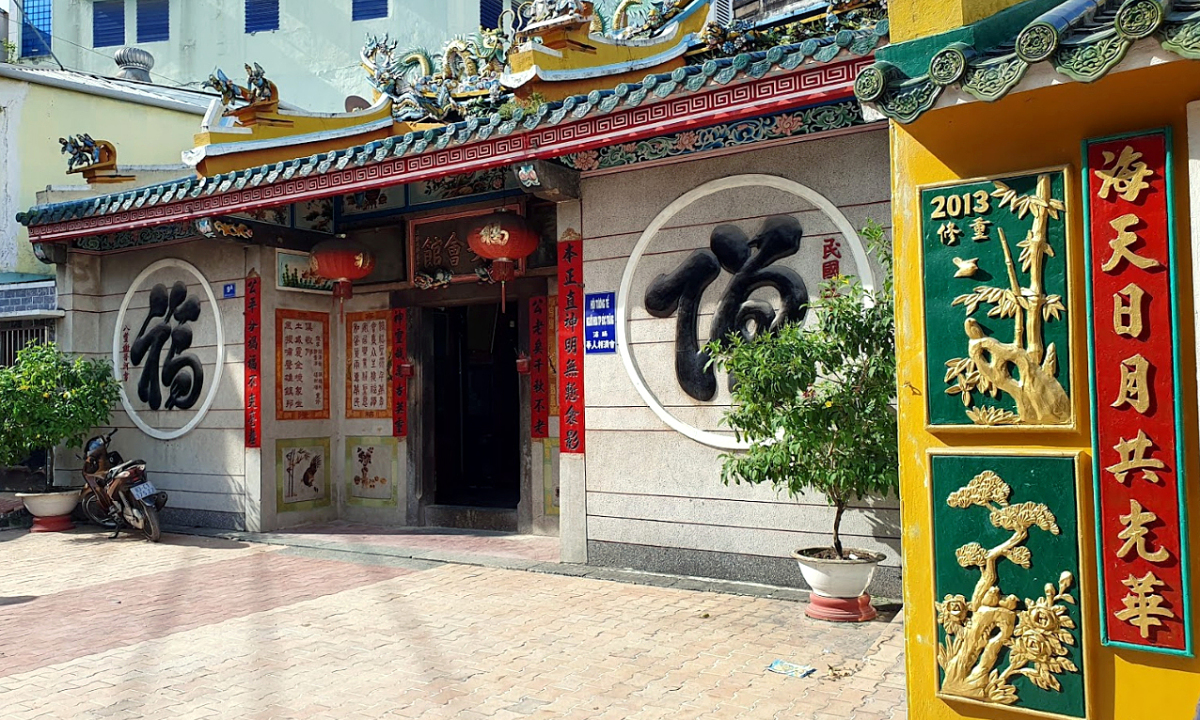
Chua Ong Bon, or Mieu Nhi Phu, is the only temple dedicated to Bon Dau Cong (Mr. Bon) and is located on Hai Thuong Lan Ong Street in District 5. Built in the late 17th century by Chinese immigrants, the temple honors Bon Dau Cong, a eunuch who served under Emperor Yongle of the Ming Dynasty and is believed to have brought prosperity to the Chinese community in the area.
During the Tet Nguyen Tieu (Lantern Festival) celebrations on the 15th day of the first lunar month, the temple hosts performances of Nam Am Fukien opera, attracting locals and visitors alike. Photo: Chua Ong Bon
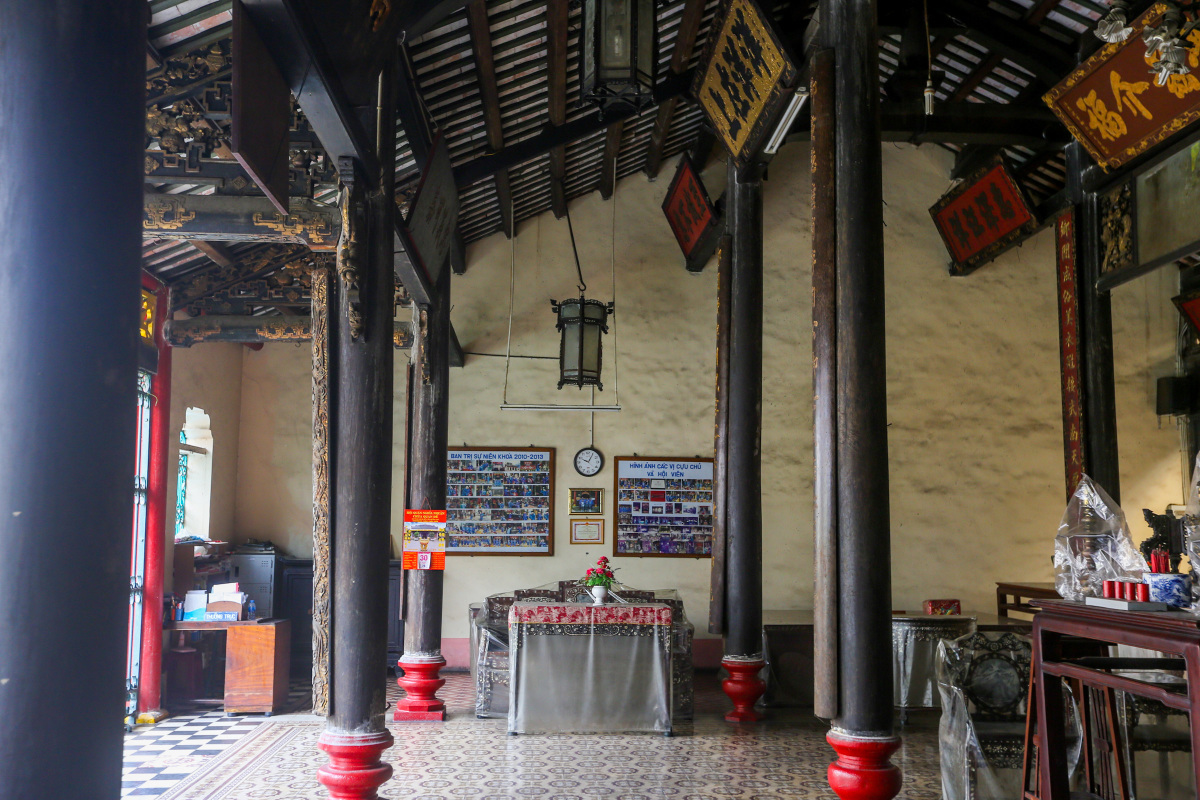
Located on Tran Hung Dao Street in District 5, Dinh Minh Huong Gia Thanh is an architectural masterpiece built by the Chinese community in the historic Cholon area in 1789. In the 17th century, with the Qing Dynasty replacing the Ming Dynasty in China, many refugees fled to Vietnam. The name “Minh Huong” combines “Minh” from the Ming Dynasty and “Huong,” meaning village.
In 1808, Emperor Gia Long bestowed the name “Gia Thanh Duong” upon the assembly hall, and it has been known as Dinh Minh Huong Gia Thanh ever since. The most important ritual at the assembly hall is the Ky Yen Festival, held on the 16th day of the first lunar month, when people pray for peace, good health, and prosperity for the new year.
Another popular destination during the Lunar New Year celebrations is Chua Ba Hai Nam, also known as Hoi Quan Quynh Phu, located on Tran Hung Dao B Street in District 5. The temple attracts visitors with lion dances and lucky money distributions in the first lunar month. Photo: Quynh Tran
The Market that Stood the Test of Time: From a Riverside Temporary Setup to the Heart and Soul of Saigon
Ben Thanh Market, nestled in the heart of District 1, boasts a historical legacy spanning over a century. It is a vibrant hub, synonymous with the energetic pulse of Saigon. Beyond being a bustling trading center, the market captivates visitors with its delectable specialties and a myriad of quintessential Vietnamese souvenirs, beckoning explorers eager for a unique discovery.
The Heart of Saigon: A Bustling Year-Round Market, Affectionately Known as the “Market for the Wealthy” Remains a Vibrant Hub of Activity.
Nestled in the heart of bustling Saigon, Tan Dinh Market is not just a historic marketplace but also a cultural icon intertwined with the city’s history. Beyond being a familiar shopping destination, it serves as an ideal rendezvous point for those eager to delve into the everyday lifestyle and charm of the Saigonese.
The Saigon Underground Hideout: Preserved for Over Half a Century.
The Saigon Underground Museum in District 3 offers an immersive glimpse into the war era. Visitors can descend into the tunnels, once used to conceal soldiers and store weapons, offering a unique and authentic experience of the war years. This, coupled with the Cu Chi Tunnels, provides a fascinating insight into the secretive underground world of the Saigon resistance.

























